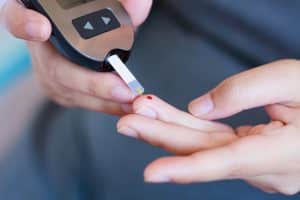Tips When Working with a Cancer Patient/Survivor
As you begin to read about each of the types of cancer and their surgeries, there are some important tips when working with a cancer patient/survivor:
1. When was the cancer patient/survivors’ surgery completed?
The general rule of thumb is that your client should not perform anything other than range of motion and gentle stretching, in the area of surgery, for at least 6 weeks post-surgery. Different procedures will require longer healing times (as stated under the surgical recovery time). ALWAYS have a Medical Clearance from before you begin training; this includes conducting an assessment. Also keep in mind that while the incision may look as if it is completely healed, there may still be internal trauma and healing taking place.
2. Where is the cancer patient/survivors’ incision(s) and how is that affecting your client’s posture and range of motion?
 Understanding where the surgical incision is may help in understanding potential muscle imbalances.
Understanding where the surgical incision is may help in understanding potential muscle imbalances.
It is not mandatory, but it can certainly be informative. If your client has undergone a mastectomy for breast cancer, they will have a horizontal incision where their breast was. If there is scar tissue or adhesions in the area, or if the pectoralis muscles are in spasm, the skin/muscles will tighten, and the shoulders will become protracted. This can cause the back muscles to be over-stretched and weak. Understanding this will help you to determine which muscles should be stretched and which should be strengthened; or both. This, along with lymph node removal under the armpit, may also cause limited shoulder range of motion in the affected arm. Your client must work to regain shoulder range of motion prior to adding any external load in that plane of motion.
Another example is a prostatectomy.
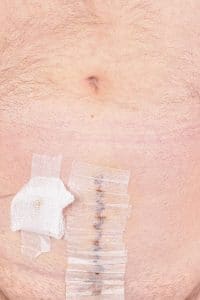
3. Did the cancer patient/survivor have lymph nodes removed and, if so, where?
Lymphedema may be the most overlooked complication of cancer surgery and treatment. It is swelling of the area following removal of, or radiation to the lymph nodes. You MUST find out if your client had nodes removed or irradiated and where! If they have had either or both, you will take baseline measurements of the affected area during the assessment. You will also teach them how to identify “pitting” edema (we will cover this in the lymphedema section of Module 2) and give them the lymphedema precautions that you will also find in that chapter. They will be at risk for lymphedema for their entire life and will need to perform lymph drainage exercises prior to their workout or sport. It will be critical that they slowly and gradually add frequency, intensity, and duration to their workouts; especially for that part of their body. You should also be cautious of weight-bearing on the affected limb for prolonged periods.
4. Did the cancer patient/survivor have their testicles removed, or are they on male hormonal therapy?
In the absence of testosterone, your client will lose lean muscle mass and have a difficult time building lean muscle. They will probably gain 20+ lbs. and it will be very difficult to lose weight as well as build muscle. They should see a registered dietician, who specialize in oncology, that can help them with a structured meal plan that will provide the nutrients they need while cutting calories. The extra weight and bodyfat will increase their risk for lymphedema if they have had lymph nodes removed or irradiated and it also increases their risk for comorbidities. You should set realistic expectations with them but strive for success. They will have similar side-effects to female menopause and may have gynecomastia (breast tenderness or growth). They will have an elevated risk for osteoporosis and weight training, while not as effective as with testosterone, will be an essential part of their training. There are additional, and more specific, side-effects that can be looked-up based on the medication that they are on and are listed in Module 2 under Cancer Treatments.
5. Did the cancer patient/survivor have their ovaries removed?
In the absence of estrogen, your client will be thrown into instant menopause (this may also happen with chemotherapy). If they are not close to peri-menopause there is a good chance that they will resume their menses. They will probably gain 20+ lbs. and it will be very difficult to lose weight as well as build muscle. They should see a registered dietician, who specialize in oncology, that can help them with a structured meal plan that will provide the nutrients they need while cutting calories. The extra weight and bodyfat will increase their risk for lymphedema if they have had lymph nodes removed or irradiated and it also increases their risk for comorbidities. You should set realistic expectations with them but strive for success. They will have an elevated risk for osteoporosis and weight training, while not as effective as with testosterone, will be an essential part of their training. There are additional, and more specific, side-effects that can be looked-up based on the medication that they are on and are listed in Module 2 under Cancer Treatments.
6. Did the cancer patient/survivors have their spleen removed?
If your client has had their spleen removed, they will be immunocompromised. You should take all precautions for someone with a compromised immune system and avoid in-person training if you are feeling under-the-weather. Have them ask their doctor if it is okay for them to go swimming as that is typically contraindicated for someone with a compromised immune system.
7. Did the cancer patient/survivor have all or part of their stomach removed?
If your client has had their stomach removed, in part or in full, please read the guidelines for eating and drinking in the section on stomach cancer. If your client has vomiting or diarrhea, they should not exercise for 24-26 hours (if this is chronic – Dumping Syndrome – they can exercise at a low intensity) while making sure to drink plenty of water and replenish their electrolytes.
8. Did the cancer patient/survivor have their adrenal gland removed?
If your client has had their adrenal glands removed, they will present with symptoms of adrenal insufficiency — fatigue, muscle weakness, low appetite, weight loss, and stomach pain. This fatigue, in conjunction with that from cancer treatment, may make it very difficult to even perform activities of daily living.
9. Did the cancer patient/survivors have their pancreas removed?
If your client has had their pancreas removed, they will be dependent on insulin injections. They must take their blood sugar level prior to exercising. See blood-sugar norms and diabetes precautions in the pancreatic cancer section.
10. Did the cancer patient/survivor undergo a transplant (kidney, liver, bone marrow, etc.)?
If your client has undergone any type of transplant, they will be on immunosuppressant drugs to prevent rejection. This means that they will be immunocompromised. You should take all precautions for someone with a compromised immune system and avoid in-person training if you are feeling under-the-weather.They may also have Graft vs. Host Disease. You can read about this in Module 2 under Cancer Treatments. If they are taking cortisone or cortisone-like drugs, they will have an elevated risk for osteoporosis, diabetes, and infections. You will need to take all of the aforementioned precautions.
11. Does the cancer patient/survivor have a muscle flap?
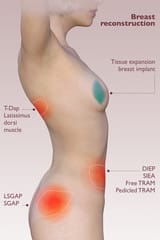
If the Lat has been used for breast reconstruction it will be critical to stabilize the shoulder girdle while stretching tight chest muscles.
If they also have an implant, those precautions will also need to be taken. You will want to avoid compound exercises that will involve the Lat as it will now contract and relax in their chest.
If the rectus abdominis has been used for breast reconstruction, your client should avoid all “crunch-type” exercises.
They should focus on core-work and strengthening their lower back. They will probably have excessive lordosis due to weakness in the abs and over-compensation from the low-back. A modified Thomas Test will need to be conducted to rule-out tight hip flexors and weak glutes as a partial cause of the lordosis.
If the sternocleidomastoid (SCM) muscle is removed in a radical neck dissection, there will most likely be synergistic dominance with the levators, upper traps, and scalene muscles that will lead to muscle imbalance and pain.
Your client may also have altered head and neck movements as well as limited shoulder range of motion (ROM). You should assess shoulder ROM by using a goniometer. Your client must work to regain shoulder range of motion prior to adding any external load in that plane of motion.
12. Does the cancer patient/survivors have breast expanders?
If your client currently has breast expanders in place, most surgeons will recommend that they avoid anything that will contract the chest. Because this includes eccentric as well as concentric contractions, ALL back and chest work (isotonic and isometric) should be avoided until the expanders have been removed.
13. Does the cancer patient/survivors have breast implants?
If your client has breast implants, you must wait at least 6-weeks post-surgery before doing anything more than gentle ROM and stretching in their upper body. Your client must work to regain shoulder range of motion prior to adding any external load in that plane of motion. Make sure to stretch the chest muscles and strengthen the opposing back muscles to correct round shoulder syndrome. Be careful with prone position or anything that applies pressure to the chest area.
We hope this article on Tips When Working with a Cancer Patient/Survivor was helpful!
Learn more about becoming a Cancer Exercise Specialist at CETI.teachable.com

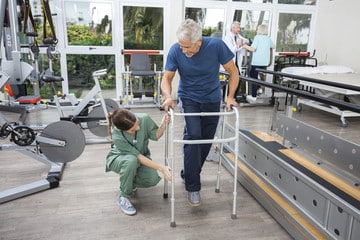

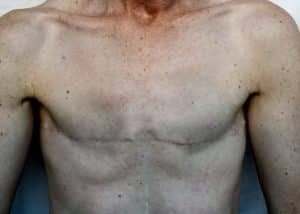 Understanding where the surgical incision is may help in understanding potential muscle imbalances.
Understanding where the surgical incision is may help in understanding potential muscle imbalances.